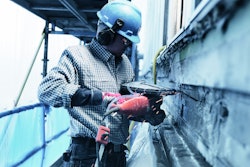It’s hard to believe but it’s time to discuss and plan for another New Year. More importantly, we have to deal with it in terms of executing a business plan and related financial goals for the year.
You do have a plan, don’t you? If not, you still have time to put one together, along with some sensitivity analysis that takes into account both positive and negative trends that develop as the year progresses.
The sensitivity analysis is important but not complex in most cases. You prepare your best guess plan for the year (or by quarter if that works better for you) and then put some thought into what happens if you find revenues move higher or lower than planned. What would you have to do in those cases to both improve financial results and avoid negative outcomes to the business — keeping in mind that both positive and negative impacts mean changes in cash flow?
So let’s say your backlog and run rates are well above what you planned. Only good news, right? If you’ve been paying attention, you would answer that question with a “maybe.” It is “maybe” because revenue increases require more payroll, material cost and overhead, and maybe you don’t have the capital base to support that level of revenue. So all of a sudden the good news becomes a significant drag on cash flow and you find yourself in a financial bind.
On the other hand, lower revenues than expected are not always negative. Having a plan and a budget for personnel, materials and overhead gives you the ability to adjust expenses pretty quickly to conserve cash and adjust the plan for the balance of the year using the revised revenue base. In addition, the work you are left with may be more profitable than the marginal work you didn’t get or lost; the people you keep will be your most productive workers; and your monthly “nut” related to marginal work is less.
The only fly in the ointment when revenues are less than expected relates to long-term financial commitments made by leasing or buying equipment that may not pay for itself at the revised revenue base. If you feel your projections are shaky, I would suggest you avoid financial commitments and rent what you need until you feel the cash flow will support a commitment.
Mixed Opportunities for 2017
The American Rental Association (ARA) forecast for the next five years reflects rental revenue growth in excess of the general economy, but at the same time cautions that some construction areas will start to slow down. Knowing that equipment rental rates were basically stagnant in 2016, I expect any annual increase in rental volume to be the result of additional time utilization, which translates into more work being performed. In other words, the ARA forecast is good news for contractors as far as I am concerned.
The expected growth rates range from 3.4% in 2017 up to 4.6% in 2020 — not bad for an industry that has excess fleet to deal with as a result of declines in the energy sector. Of course, this is assuming nothing major happens to the world economy during that period. If President Trump delivers on his infrastructure plan, energy plan, tax plan and regulation reduction program, the U.S. should maintain its world economic leader status.
Specifically, both nonresidential and commercial work have been growing at double-digit rates since 2011, which is basically not sustainable and is expected to decrease to a 6% to 7% range. The manufacturing sector is also expected to slow due to the strong dollar and reduction of work in the energy markets (which may reverse if OPEC raises oil prices).
Schools and healthcare facilities continue to be strong and should stay that way as the housing market gets back to 1.5 million new homes per year. On the other side of the coin, we are seeing less activity in government buildings and commercial facilities.
Changes in the retail business from retail locations to e-commerce should generate demand for warehouses and logistic facilities to move product.
In summary, we see a lot of balls in the air that can fall on either the plus side or the negative side. It’s all the more reason to carefully plan out the work without overextending yourself simply because you’re excited about prospects for the type of work you do. Remember the last time you were promised “shovel-ready” projects?
Let’s not kid ourselves — all of the prospects discussed over and above work that is already in the pipeline could be years away. So let’s take it as it comes, keeping the sensitivity analysis options in mind. As I keep saying, profits mean nothing if they do not show up in your bank account.



















